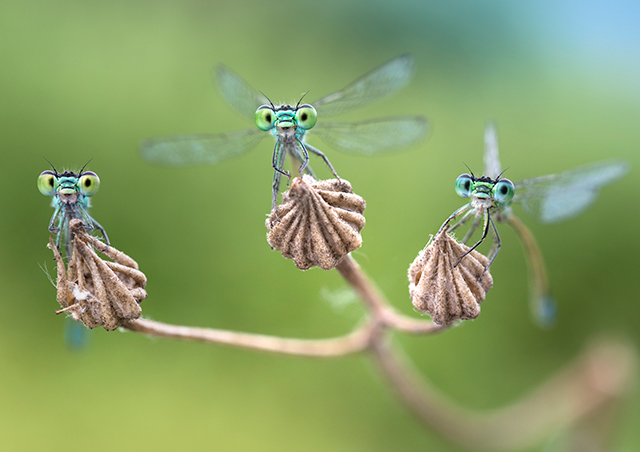Travelling exhibition “Multifaceted Insects” starts at the end of March in Hamburg

© Alberto Ghizzi Panizza
Our relationship to insects is ambivalent: We enjoy colourful butterflies, but regard flies as pests. We breed bees but are afraid of wasps. Yet insects are the most species-rich and most important group of animals in our ecosystem – and important for us humans.
The interactive touring exhibition “Multifaceted Insects: Diversity I Endangerment I Protection” puts these fascinating animals in the spotlight. The exhibition is produced in duplicate and starts at the Zoological Museum of the Leibniz Institute for the Analysis of Biodiversity Change (LIB) in Hamburg (23.3.-14.8.22) and the State Natural History Museum in Braunschweig (25.3.-24.7.22). Afterwards, it can be seen in other exhibition venues in Germany.
With the publication of the research results of the Krefeld Entomological Society, insects suddenly became the focus of public interest five years ago. The documented decline of the six-legged creatures by 75 percent of their biomass in some regions of Germany was so dramatic that the German government became active: It launched various research and conservation programmes and finally passed a law to protect insect diversity in September 2021.
The travelling exhibition “Multifaceted Insects” and its accompanying book now close a gap in the communication of knowledge about these useful and endangered animals. As a large joint project, it was initiated by the Museumsverbund der Nord- und Ostsee Region e.V. (NORe) in the Federal Programme on Biological Diversity and implemented at the LIB.
In the exhibition, visitors go on a journey of discovery into the world of the often dazzlingly beautiful fliers and crawlers. With the help of many examples, the exhibition makers explain how the busy pollinators and rubbish exterminators determine the cycle of ecosystems and our lives.
Current scientific data from the collections of the NORe museums are included and show how the composition of the insect communities in northern Germany is changing and which species are currently endangered. With many hands-on and media stations, the exhibition is interactive and invites visitors to play, listen and discover. Suggested solutions for the protection of insects encourage visitors to protect bees, beetles, and the like in their everyday lives. The exhibition is complemented by a diverse programme of educational activities and events.
The exhibition will be shown in the museums of the NORe until 2024 and will then travel to other exhibition venues in Germany. The exhibition was developed in the “ProInsekt” project and is funded by the Federal Agency for Nature Conservation (BfN) as part of the Federal Programme on Biological Diversity with funds from the Federal Ministry for the Environment, Nature Conservation, Nuclear Safety and Consumer Protection (BMUV) and the German Federal Foundation for the Environment (DBU).
To the exhibition website: www.proinsekt.de
A look at the accompanying book:
Contact:
Leibniz-Institut zur Analyse des Biodiversitätswandels (LIB)
Dr. Martin Husemann
Projektleiter „ProInsekt” & Sektionsleiter Hemimetabole und Hymenoptera
E-Mail: m.husemann@leibniz-lib.de
Frithjof Leopold
Projektkoordinator „ProInsekt”
E-Mail: f.leopold@leibniz-lib.de
Mareen Gerisch
Leitung Kommunikation & Presse LIB
E-Mail: m.gerisch@leibniz-lib.de


